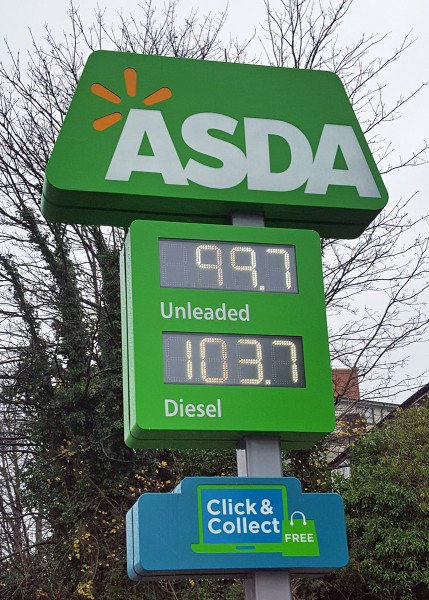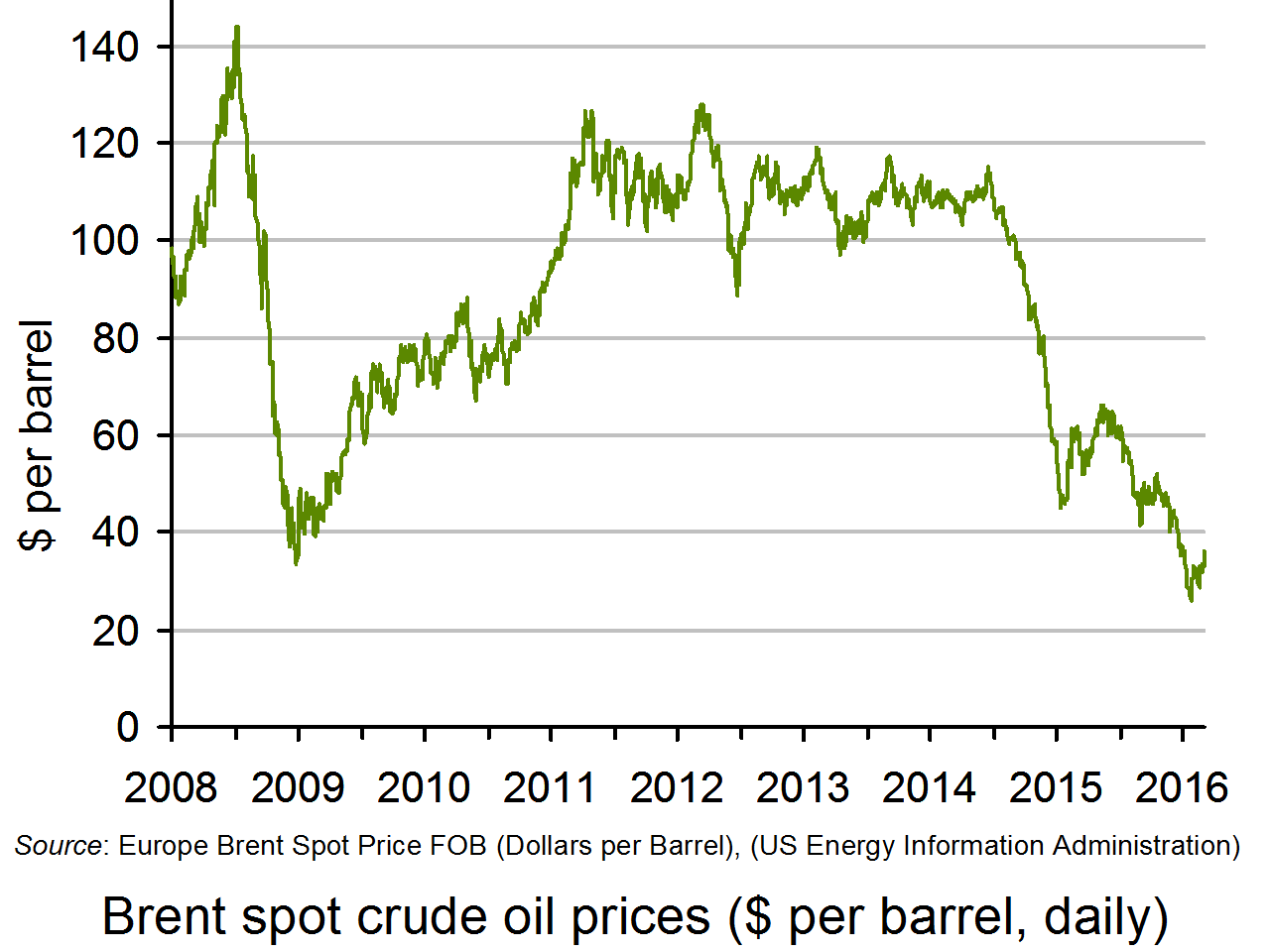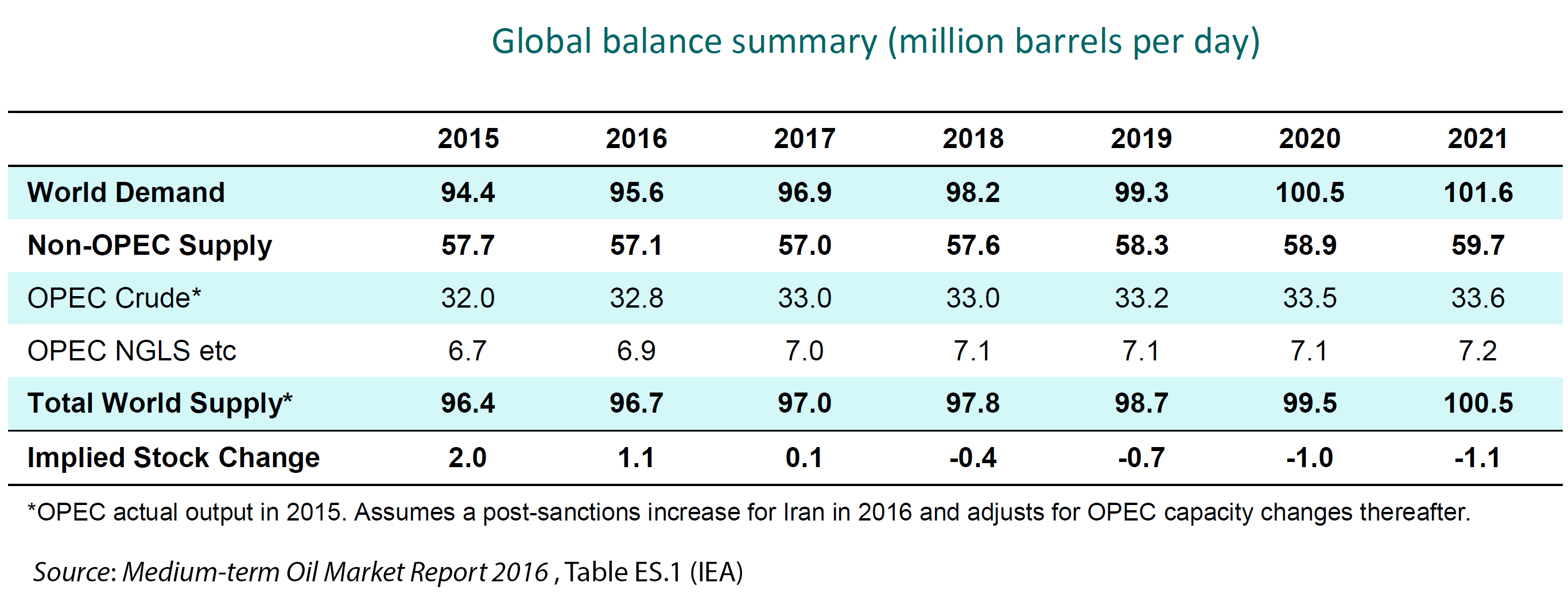Will there be an oil price rebound?
 People are beginning to get used to low oil prices and acting as if they are going to remain low. Oil is trading at only a little over $30 per barrel and Saudi Arabia is unwilling to backtrack on its policy of maintaining its level of production and not seeking to prevent oil prices from falling. Currently, there is still a position of over supply and hence in the short term the price could continue falling – perhaps to $20 per barrel.
People are beginning to get used to low oil prices and acting as if they are going to remain low. Oil is trading at only a little over $30 per barrel and Saudi Arabia is unwilling to backtrack on its policy of maintaining its level of production and not seeking to prevent oil prices from falling. Currently, there is still a position of over supply and hence in the short term the price could continue falling – perhaps to $20 per barrel.
But what of the future? What will happen in the medium term (6 to 12 months) and the longer term? Investment in new oil wells, both conventional and shale oil, have declined substantially. The position of over supply could rapidly come to an end. The Telegraph article below quotes the International Energy Agency’s executive director, Fatih Birol, as saying:
“Investment in oil exploration and production across the world has been cut to the bone, falling 24% last year and an estimated 17% this year. This is… far below the minimum levels needed to keep up with future demand. …
It is easy for consumers to be lulled into complacency by ample stocks and low prices today, but they should heed the writing on the wall: the historic investment cuts raise the odds of unpleasant oil security surprises in the not too distant future.”
 And in the Overview of the IEA’s 2016 Medium-Term Oil Market Report, it is stated that
And in the Overview of the IEA’s 2016 Medium-Term Oil Market Report, it is stated that
In today’s oil market there is hardly any spare production capacity other than in Saudi Arabia and Iran and significant investment is required just to maintain existing production before we move on to provide the new capacity needed to meet rising oil demand. The risk of a sharp oil price rise towards the later part of our forecast arising from insufficient investment is as potentially de-stabilising as the sharp oil price fall has proved to be.
The higher-cost conventional producers, such as Venezuela, Nigeria, Angola, Russia and off-shore producers, could take a long time to rebuild capacity as investment in conventional wells is costly, especially off-shore.
As far as shale oil producers is concerned – the prime target of Saudi Arabia’s policy of not cutting back supply – production could well bounce back after a relatively short time as wells are re-opened and investment in new wells is resumed.
But, price rises in the medium term could then be followed by lower prices again a year or two thereafter as oil from new investment comes on stream: or they could continue rising if investment is insufficient. It depends on the overall balance of demand and supply. The table shows the IEA’s forecast of production and consumption and the effect on oil stocks. From 2018, it is predicting that consumption will exceed production and that, therefore, stocks will fall – and at an accelerating rate.
But just what happens to the balance of production and consumption will also depend on expectations. If shale oil investors believe that an oil price bounce is temporary, they are likely to hold off investing. But this will, in turn, help to sustain a price bounce, which in turn, could help to encourage investment. So expectations of investors will depend on what other investors expect to happen – a very difficult outcome to predict. It’s a form of Keynesian beauty contest (see the blog post A stock market beauty contest of the machines) where what is important is what other people think will happen, which in turn depends on what they think other people will do, and so on.
Webcast
 At $30 oil price, shale rebound may take much, much longer CNBC, Patti Domm , Bob Iaccino, Helima Croft and Matt Smith (25/2/16)
At $30 oil price, shale rebound may take much, much longer CNBC, Patti Domm , Bob Iaccino, Helima Croft and Matt Smith (25/2/16)
Article
Opec has failed to stop US shale revolution admits energy watchdog The Telegraph, Ambrose Evans-Pritchard (27/2/16)
Report
Medium-term Oil Market Report 2016: Overview International Energy Agency (IEA) (22/2/16)
Questions
- Using demand and supply diagrams, demonstrate (a) what happened to oil prices in 2015; (b) what is likely to happen to them in 2016; (c) what is likely to happen to them in 2017/18.
- Why have oil prices fallen so much over the past 12 months?
- Using aggregate demand and supply analysis, demonstrate the effect of lower oil prices on a national economy.
- What have have been the advantages and disadvantages of lower oil prices? In your answer, distinguish between the effects on different people, countries and the world generally.
- Why is oil supply more price elastic in the long run than in the short run?
- Why does supply elasticity vary between different types of oil fields (a) in the short run; (b) in the long run?
- What determines whether speculation about future oil prices is likely to be stabilising or destabilising?
- What role has OPEC played in determining the oil price over the past few months? What role can it play over the coming years?
- Explain the concept of a ‘Keynesian beauty contest’ in the context of speculation about future oil prices, and why this makes the prediction of future oil prices more difficult.
- Give some other examples of human behaviour which is in the form of a Keynesian beauty contest.
- Why may playing a Keynesian beauty contest lead to an undesirable Nash equilibrium?
